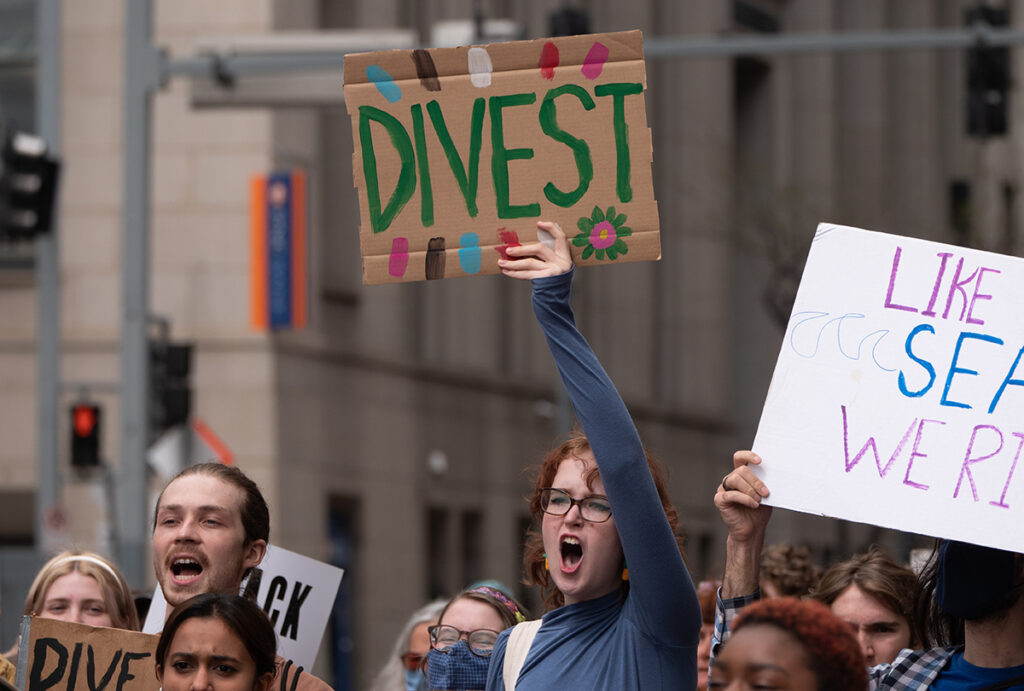Anti-LNG activists have decided that they now actually care for LNG investors after years of calling to divest.

By Resource Works
More News and Views From Resource Works Here
Strange to see activists opposed to LNG development in Canada publicly worrying about whether such projects are economically viable for investors.
One group has been arguing “the reality is that in the coming years the world may no longer need BC.’s LNG” and that could mean “the risk of future stranded assets.” Of course, they aren’t at all concerned about investors; they’re just desperately throwing every brick they can think of in organized and well-funded political campaigns to influence government.
Meanwhile, two of their prime targets proceed with their government-approved plans: LNG Canada moves steadily toward overseas exports in 2025, and Woodfibre LNG is moving toward construction, and shipping pre-sold exports in 2027. BC has also approved Fortis BC’s planned marine LNG terminal on the Fraser, which would provide LNG as fuel for visiting ships, and could also handle export cargoes from an expanded FortisBC plant in Delta.
And First Nations are working on the Haisla Nation’s Cedar LNG project, and the Nisga’a Nation’s proposed Ksi Lisims LNG operation. Odd how the activists refrain from criticizing the First Nations Peoples who want to export LNG to help their communities thrive .
And, somehow, the activists’ messages fail to impress LNG developers in the U.S., Australia, the United Arab Emirates, Russia, and Qatar. For context, Qatar is building or chartering 104 LNG carriers, and plans to double its LNG output by the end of 2030. It would then produce 142 million megatonnes of LNG a year — more than 20 times the 7 million from the LNG Canada plant.
The critics’ climate issues and concerns are indeed legitimate, no argument. World emissions hit a record high in 2023, the International Energy Agency reports. Emissions in advanced economies fell to a 50-year low, but rose in China and India.
China in 2023 accounted for 35 percent of global carbon-dioxide emissions. The U.S. stood at 12.5 percent and India at 7.7 percent. While China has indeed made much progress on renewables, it and India continue to burn more and more coal.
Why Canadian groups think they can solve world issues by focussing on relatively modest LNG proposals in Canada is beyond us.
Our Canadian LNG will be environmentally cleaner than LNG from many rival suppliers. And buyers can use it to generate more of their electricity, replacing coal-powered generation that produces far more emissions. That’s an environmental plus.
LNG Canada will have an emissions intensity of 0.15 percent of carbon dioxide per tonne of LNG produced, less than half the global industry average of 0.35 percent per tonne, and 35 percent lower than the best-performing facility.
Woodfibre LNG will be the world’s first net-zero LNG export facility — 23 years ahead of government net-zero goals. Woodfibre LNG will have an emissions intensity of just 0.04 percent — and that’s less than one sixth of the global industry average.
The Haisla’s Cedar LNG project will have an emissions intensity of just 0.08 percent of CO2 per tonne of LNG. That’s less than a third of the global average. Its plans call for emissions to be near zero by 2030.
And the Nisga’a Ksi Lisims project promises to be operating with net-zero emissions within three years of the project’s first shipment.
Our LNG has another advantage over U.S. LNG: The shipping distance from BC to prime Asian buyers is about 10 days compared to 20 days from U.S. Gulf Coast LNG plants. That means 50-60 percent lower emissions from the ships carrying the LNG.
Canada produces only 1.5 percent of world greenhouse-gas emissions. As Canada’s independent parliamentary budget officer reported in 2022: “Canada’s own emissions are not large enough to materially impact climate change.”
Thus the First Nations LNG Alliance points out: “You could shut the entire country down — no energy, no industry, no jobs, no transportation, no heat, no light — and that reduction of 1.5 percent of emissions could be wiped out by new energy development and new emissions in other countries in a matter of some months or perhaps a few years.”
And so the Alliance says: “So we have government punishing taxpayers, First Nations and industry by putting on blinkers when it comes to LNG. Ottawa views Canada as a geographical silo in which we must meet our emissions targets, regardless of what others do.
“It’s long past time, indeed, to act locally — but think globally.”
Share This:



